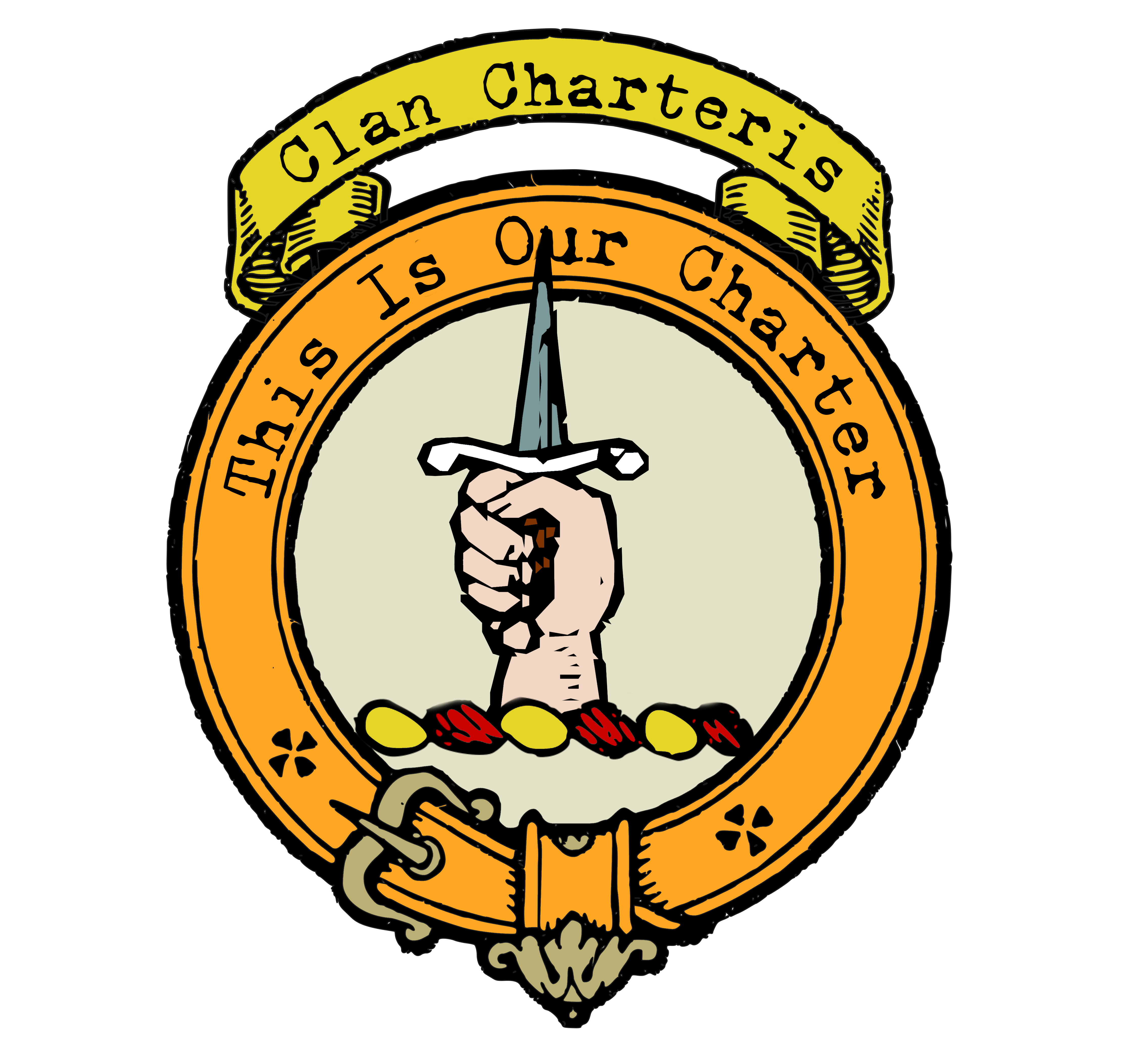Charteris Clan
|
|
CREST: A dexter hand holding up a dagger paleways Proper MOTTO: This is our Charter TRANSLATION: N/A VARIATIONS: N/A |
| The Scottish clan Charteris is a family with a long and storied history dating back to at least the 12th century. The family can trace its origins back to Chartres, France, where William, a son of the Lord of Chartres, is said to have come to England with the Norman Conquest. His descendants eventually settled in Scotland, where they played significant roles in Scottish politics and society.
The family’s fortunes rose and fell over the centuries, with members of the family often involved in violent conflicts and political upheavals. One of the most famous members of the family was Sir Thomas Charteris, who was appointed Lord High Chancellor of Scotland by David II in 1342 but was killed in the Battle of Durham in 1346. Another notable member of the family was Colonel Francis Charteris, who purchased lands near Haddington and left an only daughter, Janet, who married the Earl of Wemyss. Her second son, the Honorable Francis Wemyss, later fifth Earl, inherited the substantial estates of his maternal grandfather, and in consequence assumed the name and arms of Charteris. Today, the Charteris estates near Haddington are sold, but the magnificent Palace of Gosford House, partly designed by Robert Adam, is still the seat of the Earl of Wemyss and March, chief of the name of Charteris. The Charteris family also had a branch in Kinfauns, Perthshire, which often disputed the authority of the Ruthvens, a neighboring family with considerable sway over Perth. This led to a bitter and bloody feud, with the Ruthvens often emerging victorious in the struggle for power. Despite their involvement in violent conflicts, the Charteris family also produced notable figures in other fields. Henry Charteris, for example, was an eminent printer and bookseller in Edinburgh who published the famous Ane Satyre of the Thrie Estaitis of Sir David Lyndsay, which is still performed today. His son became a Professor of Divinity and a regent of the University of Edinburgh. The family’s history is filled with intrigue, violence, and political upheaval, but it is also marked by notable achievements in various fields. The Charteris name remains a significant part of Scottish history, and its legacy continues to be felt today through the achievements of its descendants and the presence of its descendants in Scottish society. |
|

Purchase @ Redbubble
Purchase @ Amazon.com
Purchase @ Amazon.co.uk

